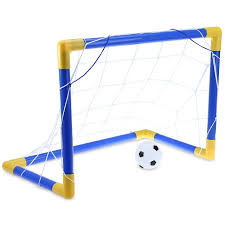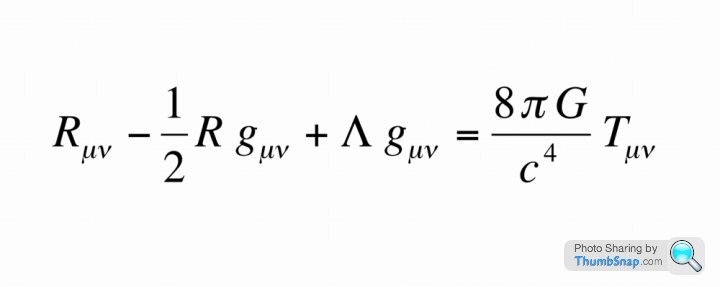Discussion
Thorodin said:
While gravity exerts its force on mass, what happens when a laser beam is directed horizontally? As the laser is light, will it stay horizontal or bend around the Earth? Simple for you boffins I know, but beyond me.
Gravity will bend the laser beam, as it does with any light beam, however the effect in a gravity well as weak as earths is minuscule.Gravity bends light, but not by Newtonian mass / attraction but rather by Relativity - gravity curving the space-time through which the light travels, this gives the appearance of light bending to the outside observer.
The scale of both Earth's gravity and light's speed mean any curvature of light will be extremely small.
Very simply put...
The scale of both Earth's gravity and light's speed mean any curvature of light will be extremely small.
Very simply put...
Thanks gents. I was aware of the space/time curve (having seen and marvelled at those pics of a football in a net) and wondered if the 'bend', although tiny, could be measured. Train of thought was the possibility of increasing power and therefore number of photons (?) to achieve a specific direction.
Thorodin said:
Thanks gents. I was aware of the space/time curve (having seen and marvelled at those pics of a football in a net) and wondered if the 'bend', although tiny, could be measured. Train of thought was the possibility of increasing power and therefore number of photons (?) to achieve a specific direction.
The power output does not affect the bend. More power means more photons, but each of them does their own thing. It is not like water from a hose.Thorodin said:
Thanks gents. I was aware of the space/time curve (having seen and marvelled at those pics of a football in a net) and wondered if the 'bend', although tiny, could be measured. Train of thought was the possibility of increasing power and therefore number of photons (?) to achieve a specific direction.
As others have stated, the power of the beam doesn't have an impact on the amount of the bend. The only thing that does is the gravity of the object the light is moving past.Earth is not massive enough to cause a large bend. Something like a black hole would cause quite a big bend. The principle is actually used in astronomy to measure various things - it's called gravitational lensing.
PH isn't for homework, but if you fancied reading further on the matter*, this isn't a bad place to start https://en.wikipedia.org/wiki/Gravitational_lens
*yes, that was a pun. Sue me.

Halmyre said:
Interesting side note; if you had a sufficiently large flat surface with a gravitational field, and fired a laser and a gun side-by-side parallel to the surface, the bullet and the laser beam would strike the surface simultaneously.
Interesting but perhaps slightly flawed. The few things that spring to mind are i. the bullet - a dropped bullet and a fired bullet won't fall at the same rate, due to aerodynamic effects ii. the bullet has mass that is attracting the surface and adding to the overall force whereas the laser won't be.Could be wrong

ETA: Thorodin now see that was the point you were making - I think!
Edited by andy_s on Monday 11th June 18:41
andy_s said:
Interesting but perhaps slightly flawed. The few things that spring to mind are i. the bullet - a dropped bullet and a fired bullet won't fall at the same rate, due to aerodynamic effects ii. the bullet has mass that is attracting the surface and adding to the overall force whereas the laser won't be.
Could be wrong
ETA: Thorodin now see that was the point you were making - I think!
Er, yeeersss… I was trying ever so hard not to appear thick! Now I've been rumbled! I am thick!Could be wrong

ETA: Thorodin now see that was the point you were making - I think!
Edited by andy_s on Monday 11th June 18:41
Been a discussion elsewhere about some idiotic flat earthers propounding their theories. I can build a house, build stained glass windows for a church but science of this kind seems full of black holes. Or the other kind of holes.
Thorodin said:
Er, yeeersss… I was trying ever so hard not to appear thick! Now I've been rumbled! I am thick!
Been a discussion elsewhere about some idiotic flat earthers propounding their theories. I can build a house, build stained glass windows for a church but science of this kind seems full of black holes. Or the other kind of holes.
I think it was Feynman that said 'if you think you understand quantum mechanics; you don't'... Been a discussion elsewhere about some idiotic flat earthers propounding their theories. I can build a house, build stained glass windows for a church but science of this kind seems full of black holes. Or the other kind of holes.

(He's got a good approach to a lot of this stuff, entertaining and informative viewing)
andy_s said:
Halmyre said:
Interesting side note; if you had a sufficiently large flat surface with a gravitational field, and fired a laser and a gun side-by-side parallel to the surface, the bullet and the laser beam would strike the surface simultaneously.
Interesting but perhaps slightly flawed. The few things that spring to mind are i. the bullet - a dropped bullet and a fired bullet won't fall at the same rate, due to aerodynamic effects ii. the bullet has mass that is attracting the surface and adding to the overall force whereas the laser won't be.Could be wrong

ETA: Thorodin now see that was the point you were making - I think!
Edited by andy_s on Monday 11th June 18:41
Halmyre said:
andy_s said:
Halmyre said:
Interesting side note; if you had a sufficiently large flat surface with a gravitational field, and fired a laser and a gun side-by-side parallel to the surface, the bullet and the laser beam would strike the surface simultaneously.
Interesting but perhaps slightly flawed. The few things that spring to mind are i. the bullet - a dropped bullet and a fired bullet won't fall at the same rate, due to aerodynamic effects ii. the bullet has mass that is attracting the surface and adding to the overall force whereas the laser won't be.Could be wrong

ETA: Thorodin now see that was the point you were making - I think!
Edited by andy_s on Monday 11th June 18:41
Halmyre said:
Interesting side note; if you had a sufficiently large flat surface with a gravitational field, and fired a laser and a gun side-by-side parallel to the surface, the bullet and the laser beam would strike the surface simultaneously.
Is this the laser version of the hammer and feather experiment?Toltec said:
Halmyre said:
andy_s said:
Halmyre said:
Interesting side note; if you had a sufficiently large flat surface with a gravitational field, and fired a laser and a gun side-by-side parallel to the surface, the bullet and the laser beam would strike the surface simultaneously.
Interesting but perhaps slightly flawed. The few things that spring to mind are i. the bullet - a dropped bullet and a fired bullet won't fall at the same rate, due to aerodynamic effects ii. the bullet has mass that is attracting the surface and adding to the overall force whereas the laser won't be.Could be wrong

ETA: Thorodin now see that was the point you were making - I think!
Edited by andy_s on Monday 11th June 18:41
Halmyre said:
I've tried searching to see if I can find the original quote but can't find it. The linear (or planar) gravitation field suggests there's no curvature of space and therefore no "bending" of the light beam.
Yeah - a planar CoG is somewhat problematic and unlikely to be encountered; however if we can assume there is one then I think there will still be attraction by curvature of ST - Thorodin and above have used the ball in net analogy - or the rubber sheet analogy for visualising this curvature, however this is only a limited 2D analogy. Visualising it in 3D would give you an analogy like a 'cloud' around an object - the closer you are the more dense the 'cloud', the further away then the less dense - the cloud being gravity/ST curvature and density being amount of curvature/force. We can then apply this to the linear surface as being like a layer of fog on the surface - the forces/'curvature' of ST is still there in the decaying density of the 'cloud' and so would still affect other objects - I think. Gassing Station | Science! | Top of Page | What's New | My Stuff





